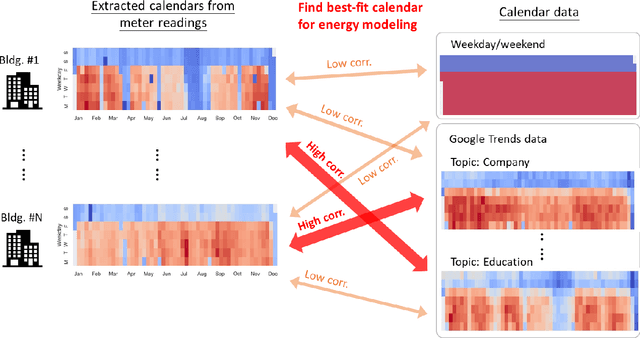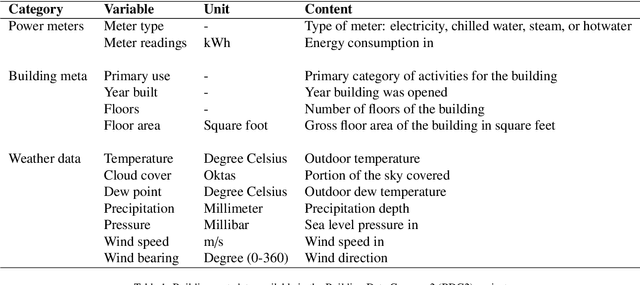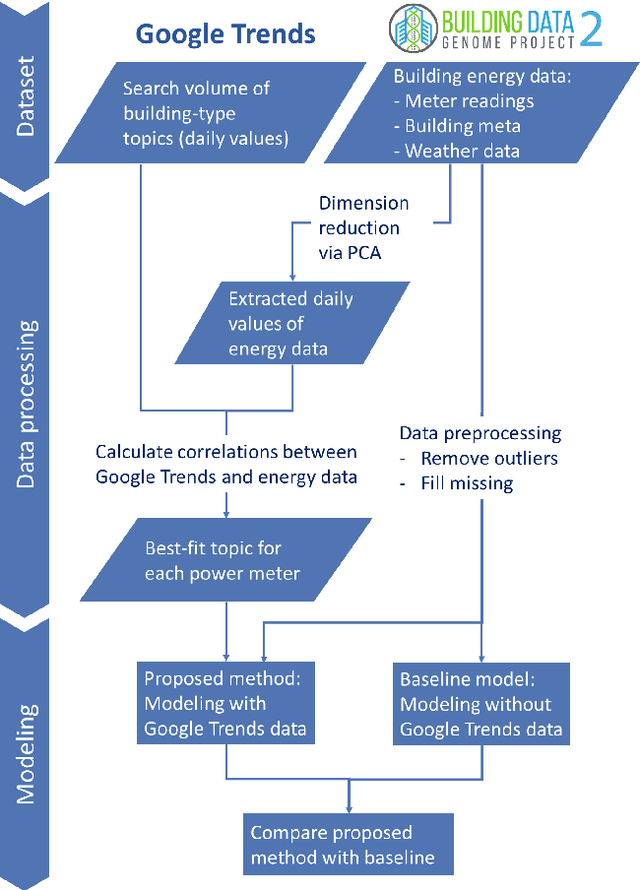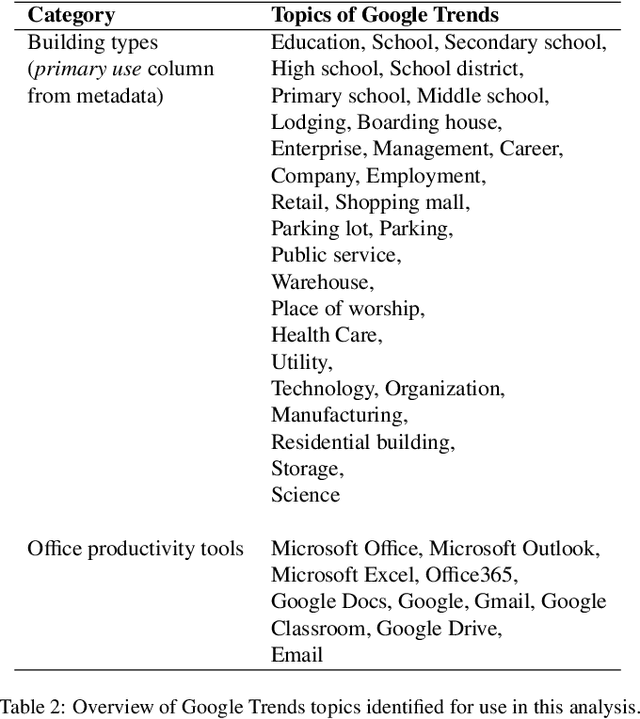Using Google Trends as a proxy for occupant behavior to predict building energy consumption
Paper and Code
Oct 31, 2021



In recent years, the availability of larger amounts of energy data and advanced machine learning algorithms has created a surge in building energy prediction research. However, one of the variables in energy prediction models, occupant behavior, is crucial for prediction performance but hard-to-measure or time-consuming to collect from each building. This study proposes an approach that utilizes the search volume of topics (e.g., education} or Microsoft Excel) on the Google Trends platform as a proxy of occupant behavior and use of buildings. Linear correlations were first examined to explore the relationship between energy meter data and Google Trends search terms to infer building occupancy. Prediction errors before and after the inclusion of the trends of these terms were compared and analyzed based on the ASHRAE Great Energy Predictor III (GEPIII) competition dataset. The results show that highly correlated Google Trends data can effectively reduce the overall RMSLE error for a subset of the buildings to the level of the GEPIII competition's top five winning teams' performance. In particular, the RMSLE error reduction during public holidays and days with site-specific schedules are respectively reduced by 20-30% and 2-5%. These results show the potential of using Google Trends to improve energy prediction for a portion of the building stock by automatically identifying site-specific and holiday schedules.
 Add to Chrome
Add to Chrome Add to Firefox
Add to Firefox Add to Edge
Add to Edge